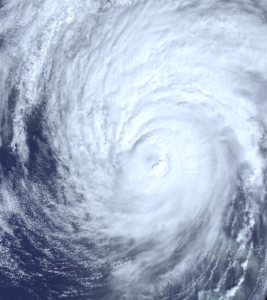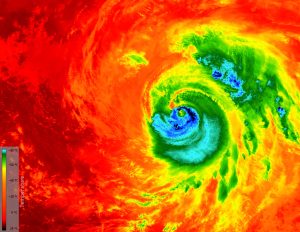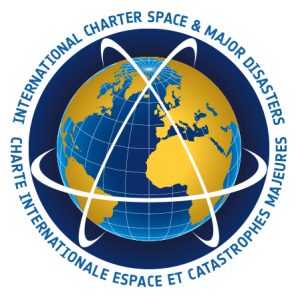After the storm – Tracking Hurricane Matthew and analysing its impact
In this set of two activities, students will explore the applications of Earth observation data in tracking hurricanes and assessing their aftermath by using the example of Hurricane Matthew. Students will learn how a hurricane develops and the impact that extreme weather can have on the society. They will do this by comparing satellite images. The activity could be completed either in an ICT suite in which students complete independent learning about the images or could be taught using a more active learning style in the classroom.
Subject Geography, Science
- Explain how hurricanes develop
- Understand the impact that extreme weather can have on society
- Understand how Earth observation can be used to track incoming weather and assess the damage caused by extreme weather
- Understand how countries work together to supply aid and relief to affected areas


Did you know?
When disaster strikes, a group of international space agencies pools its resources and expertise to support relief efforts on the ground. The International Charter Space and Major Disasters is an international collaboration between 16 owners or operators of Earth observation missions. It provides rapid access to satellite data to help disaster management authorities in the event of a natural or man-made disaster. Since its first request for support in 2000, until May 2018, the Charter has called on space assets on many occasions, helping to respond to more than 580 disasters in more than 120 countries. On average, the Charter is activated about 40 times a year. predict future climate change.

Paxi – The Water cycle
Brief description:Join Paxi as he visits Planet Earth, and learn about the water cycle. In this video, targeted at children...
Copernicus Browser Case Study: Oil Spills From Space
Brief description This activity supports teachers in guiding their students to investigate oil spills and their impacts using satellite imagery....
Country under Threat – The prospects for life on small islands
Brief description In this set of four activities pupils will learn about the causes and potential impacts of sea-level rise...
Climate Change Kit
Explore ESA’s interactive Climate Change Kit The Climate Change from Space Kit is an interactive PDF that takes the reader through...
Paxi explores ice
Brief description:Join Paxi on an adventure to the North and South poles, to learn more about ice and its role...


